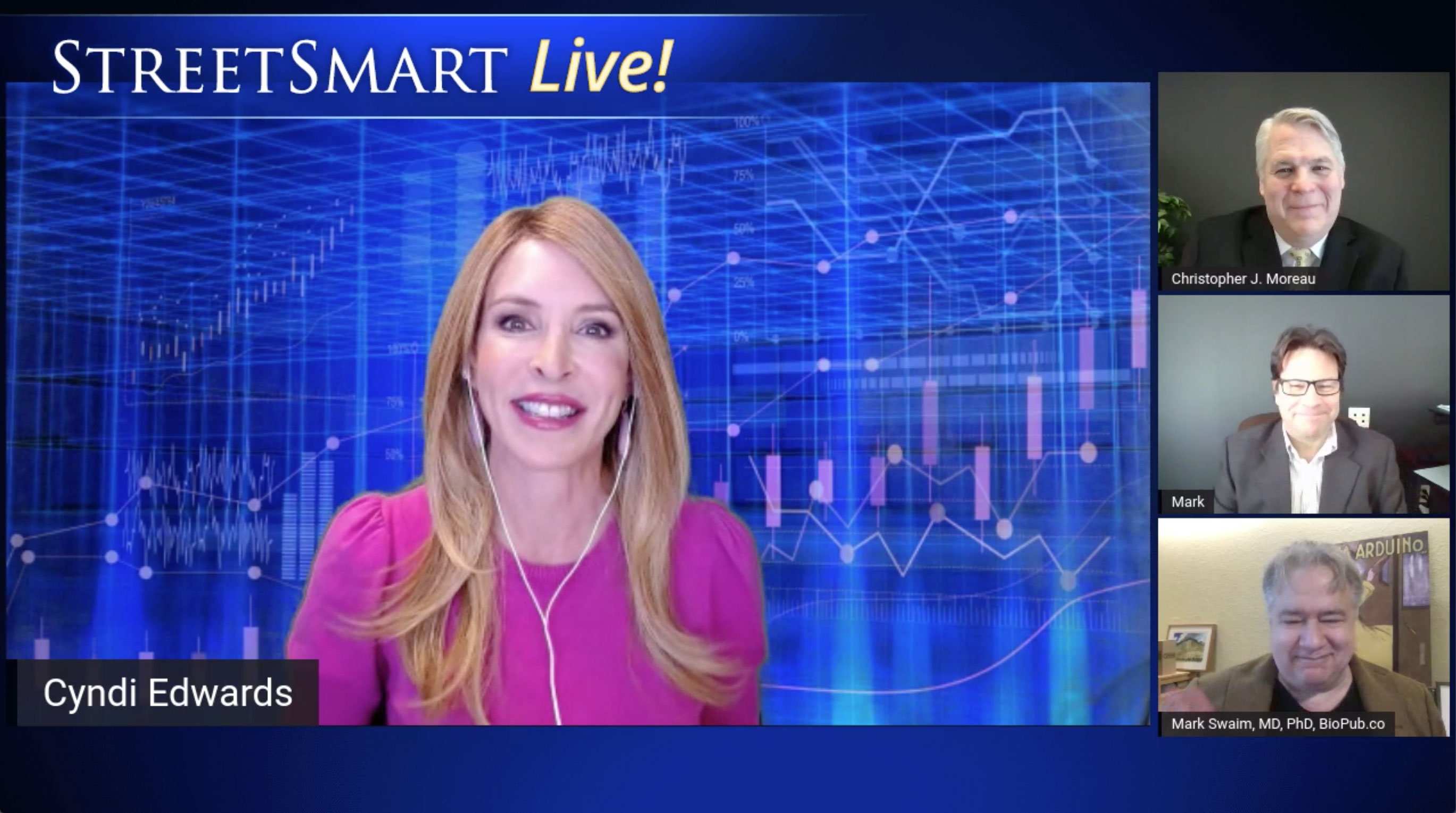Louis James, Casey Research: Why the Big Spike Will Be Even Bigger This Time
Source: The Gold Report††(12/27/07)
Part I of a two-part interview with Louis James, Senior Editor with Casey Research. James talks about the gold and silver markets, and shares his views on several interesting companies. In Part II, Louis discusses five more gold and silver companies he likes and why.
Part I of a two-part interview with Louis James, Senior Editor with Casey Research. James talks about the gold and silver markets, and shares his views on several interesting companies. In Part II, Louis discusses five more gold and silver companies he likes and why.
TGR: Where do you think gold is headed over the next 12 months?
JAMES: There are two different ways of looking at the gold market. One has to do with the fundamentals of supply and demand. The other has to do with the speculative value of gold. Regarding the first view, the supply side is easier to grasp. And right now, there are very clear signs of difficulties ahead on the supply side. Newmont Mining Corp. (NYSE: NEM) has already announced that production is going to decline by many millions of ounces. Demand is a little trickier to forecast. Silver and the base metals have industrial uses, so industry drives demand. However, the value of gold is based largely on perception ó what people feel and what they fear, as opposed to what manufacturers need.
The turmoil of the last year has made it very clear that there are good reasons to hold onto gold because it has a long and established history of solid value. While weak supply and recent market turmoil may not justify the current price of gold, they certainly explain it. And those factors were not assuaged by the Fed's little rate tweak last week. I have to believe that despite some short-term fluctuations, the fundamentals of supply and demand ó such as they are ó are very bullish for gold, at least over the next year or two.
So thatís one side of the story. The other side has to do with the speculative value of gold. What happens when people start fearing for the value of their paper assets and their fiat currencies? Itís a totally different question than which way is gold heading, and what happens if this project or that project is successful. At Casey Research, we think that the conditions are almost, but not quite, approaching those of the late 1970ís. We think the government vastly understates inflation, and we see the kind of economic forces that drove gold prices to record highs in the 1980s converging again. Theyíre not obvious yet ó average people on the street are not worrying too much about the value of the dollar yet, but we think it wonít be long before they start.
The average man in the street is not yet worrying about the US dollar and the economy as much as he perhaps should be. But when that happens, as it did in the late '70s, when everybody and their cousin was worried about hyperinflation, when your bartender was telling you about the gold coins he just bought, and so onówhen the average person was getting into the pictureó thatís when we had the real mania stage. Thatís when you have a spike in gold. So far, we havenít seen anything like this. Itís just the basics of supply and demand for gold in the current context. But the second part of the story is that we believe that big spike is still ahead, and it will be even bigger than the last time because the stakes are even higher now.
TGR: Do you want to venture a guess what that spike will be? I understand $850 price spike in 1980, adjusted for inflation, would be about $2,200 now.
JAMES: Thatís about right.
TGR: Do we see a spike going beyond that?
JAMES: Actually, I am not sure we will see quite the spike we saw in 1980. Itís interesting that back then gold held over $800 for only four days, and two of those days were weekend days. I donít actually see a spike quite like that. Things will fall apart more gradually this time. I think this time we will see more of a gathering surge that will take the price quite high. There will be a spike somewhereówho knows where? But that spike wonít be as important as the tidal surge that will easily take gold over $2,000. And if you use the shadow governmentís inflation figures for what that $850 would be worth in 2007 dollars, itís over $4,000 to even match that 1980 spike.
When will that happen? I think itís a foolís errand to try to call that exactly. Iím confident enough that it will be within a year or two, max three, that it makes sense to me to buy gold now. I am not at all worried about gold being close to record highs now. Not just because in inflation terms, itís cheap, but because of where I think that surge will take the gold price. I think gold is still cheap, even in the $800 range.
TGR: Letís talk about some companies, starting with Bravo Venture Group Inc. (TSX.V: BVG).
JAMES: One of the things to remember about Bravo it that has a management team that has done it all before. From the boardroom to the people in the field, the people are experienced. And Bravo has multiple kicks in the can. The company generated a lot of excitement over a project in Nevada that ultimately didnít work out, which sometimes happens. Exploration is never a sure thing. But the company is pursuing the generative model very well. It has projects in different jurisdictions, different metals even, but itís mostly focused on gold.
TGR: What do you mean by a generative model?
JAMES: It means the company generates projects that it either advances or sells. Bravo identifies a project in its early stages, then maybe polishes it up, or develops it a little before handing it off to another mining company. And the classic structure for this model is the joint venture (JV)óusing other peopleís money to take on the high-risk, exploration stage, which makes a lot of sense to us.
If you look at the simple odds of finding an economic gold deposit out of a prospectó I believe these are on the order of 1 in 300ó it just makes sense to shift that risk onto someone else. When it comes to the big finds, I canít think of many instances where the first company that stumbled on the scene hit it big. Most of the big projects have been owned by several companies before the big discovery was made. Even the current darling of the market, Aurelian Resources Inc. (TSX: ARU), with its big find at Fruta del Norte, didnít know what it was looking for. That was a blind find that occurred while the company was exploring off the edges of another deposit.
Frankly, for a small company, even if the interest in the project were diluted down to 30 percent, or a major took the project all the way into production, leaving the smaller company with only 10 or 20 percentó that 10 or 20 percent of a project that is big enough to interest a major is a lot of value for a junior. The cash flow generated by that project will pay for the junior to produce all sorts of shareholder value in the future.
TGR: Does Bravo have any interesting projects right now?
JAMES: I really like the companyís Homestake Ridge project in British Columbia. Itís a very interesting project with high-grade resultsóthe better part of a million ounces now. We also like the Woewodski Island project in Alaska, which involves a lot of very high-grade surface work. Thereís no tonnage yet; thereís no ore deposit until you actually have drill holes outlining volume of rock, and thatís whatís happening now. Sure, it's speculation but itís in a company that already has some successful projects and plenty of blue sky in other areas.
TGR: What about Eaglecrest Explorations Ltd. (EEL-TSX Venture)?
JAMES: We are not formally recommending Eaglecrest; however, Iím comfortable talking about it. Iíve visited the site, I know the people and I have gone over the technical details with them. The main concern with Eaglecrest is, of course, the politics in Bolivia. The government just formally passed, and the judiciary just put the kiss of approval upon, a new tax measure. On the one hand, itís positive because it puts an end to all of the questions about whether Bolivia is going to be anti-mining or not. The fact that theyíre putting in this tax regime shows that they do want the mining revenue. On the other hand, it's a tax increase. Although the government gives tax credits on royalties, the net result is that mining is now more expensive in Bolivia. If I were a mining company or an exploration company looking for more minerals right now, I would probably not choose Bolivia. Thatís why Iím hesitant to recommend Eaglecrest right now.
That said, Eaglecrest has title to a very interesting prospect. . .I also like Eaglecrest's technical people. And thatís paramount to me. The rocks donít excite me if I donít think good people are working on them. Eaglecrestís new team has persuaded me that their interpretation of the geology of this project is perhaps better than the previous interpretation. And that lends new life to the deposit.
TGR: What about the recent no-confidence vote in Venezuela?
JAMES: I like Venezuela, which like Bolivia, is very interesting geologically. But Chavez is still president and he can still rock the boat. Just look at the deal he did with the petroleum companiesó50 percent, take it or leave it. And of course, the oil companies have all that infrastructure in place. If they have a choice between 50 percent and zero, theyíll take the 50 percent naturally. But a guy who can do that is not really a guy who inspires a lot of confidence. So, weíre still leery of Venezuela, but, boy, thereís a lot of geologically interesting terrain there. And it sure would be nice to see that open up more.
TGR: In some ways, Venezuela under Chavez and Bolivia under Morales are alike, arenít they?
JAMES: Thatís true. When we were in Bolivia, we spoke with people in the opposition, which controls the Senate. We spoke with people from industrial concerns, and they control the four major provinces that produce most of the revenue in the country. And, of course, Morales ticked off the judiciary, too. So, there is significant opposition; it is quite possible that the guy could be out soon. If you just look at the history of Bolivia, the average term of a president lasts only a year or two. So odds are that Morales will be out soon. But as an investor, a speculator, I am not looking for change. Iím not looking for turmoil; Iím looking for stability. I want to know thereís a working mining environment and that itís going to stay that way. The fact that there may be a change for the better is potentially good, but it tells me I donít want to invest now. I want to wait and see if the change is good, and then see if itís stable, and then maybe thatís the time to start taking a financial risk.
TGR: Any thoughts on Exeter Resource Corp.(TSX.V:XRC; AMEX:XRA)?
JAMES: I like Exeter a lot. Weíve had an interesting history with the company. We sold it when their former flagship project, Don Sixto, in Mendoza province, ran into political trouble there. We did it a bit early, when rumors about potential trouble were just starting. The rumors proved true and we were happy to be out. However, ultimately the company did an absolutely remarkable job of recovering and bringing forward its Plan B and Plan C projects, and D, E, and F, actually.
What I really like about Exeter is it has two very highly prospective projects right now. One is the super high grade Cerro Moro project in mine-friendly Santa Cruz province, southern Patagonia. The company was very focused on a small area of that project, but there are a lot more of those high-grade showings in the area. In a recent press release, Exeter announced fresh results from a new target area at Cerro Moro that appears to be just as high grade, just as exciting. So, the hypothesis is that this one area that the company has concentrated on is just the beginning.
Then thereís Caspiche, a project in Chile. In preliminary drilling, Exeter punched a 300-meter hole with 0.9 g/t gold. All of a sudden, thereís more potential. There are a few holes in this area that were all shallow. Several of them hit good bulk tonnage grades, maybe 0.7 g/t gold or so, over a very large width. Pretty good. It isnít a slam-dunk, but it has the hallmarks. It has the alteration area; it has a few holes; and it has one really good hole that suggests that this could be one of those really big gold targets.
Exeter is not particularly cheap right now, but if either of these two speculations works out, it will be really, really good for the company. Plus, the company has a pipeline full of other projects. And who knows? The company may even get Don Sixto, its former flagship project, back. Mendoza has a new pro-mining governor.
So, I like Exeter a lot, but I have to stress that it is highly speculative; it doesnít have a 43-101-compliant resource right now. It will have resources soon, but the market has already given the company a lot of credit for that. If either of those two exciting projects disappoints, it would be easy to get hurt on that stock. That said, the upside potential is very good based on outstanding results so far.
TGR: Letís move on to First Majestic Silver Corp.(TSX.V:FR; PK SHEET:FRMSF).
JAMES: I like this company also. I like the people involved ó the technical people on the ground in Mexico are very experienced. Keith Neumeyer, the CEO, made his name with First Quantum Minerals (FM.TO), so he has a bit of a pedigree. Of course, he wasnít the only one behind First Quantumís huge success. But he was part of the management team, so heís worth risking a bet on.
First Majestic raised high expectations from the get-go about how quickly it would be able to outline a lot of ounces of silver, and how quickly it would be profitable. The company didnít deliver as quickly as it had intended to, but it is doing what it promised, and thatís important. Itís taken them longer than we hoped on many fronts, and it hasnít done a great job of letting the public know when itís reached milestones. One of those milestones was the addition of a zinc circuit to its flagship mine, La Parrilla. Itís taken a while, but the company is getting the costs down to where they need to be so that hopefully this coming quarter the numbers will be quite a bit improved.
So, that base of value is starting to solidify, and First Majestic Silver does have plenty of exploration potential. The stock got whacked pretty hard a couple of years ago, when one of the companyís major exploration projects delivered some really disappointing drill results. The market gave them a 50 percent haircut.
TGR: Wasnít that a little severe?
JAMES: Exactly. We started buying the stock with both hands because it was clear that even though this was a serious and material disappointment, it was not worth 50 percent of the company. We issued a strong buy on that low, and within two months our subscribers who followed our advice had a 100 percent return on their investment.
TGR: What about going forward?
JAMES: First Majestic has a solid base of production now that finally seems to be coming into its own. Thereís still plenty of blue sky, lots of projects still to explore. I think the company has prospects for reaching its 200 million ounces of silver equivalent potential this coming year.
TGR: In general terms, how would you characterize the silver market in Mexico?
JAMES: I think the whole subsector is ripe for consolidation. And First Majestic is well positioned. It has the resources, the connections in Toronto and elsewhere to raise the funds to be a consolidator. However, if the company gets gobbled up instead, it will be at a premium for existing shareholders. So either way, thereís also an M&A
TGR: What are your thoughts on Goldcorp Inc. (GG:NYSE;G-TSX)?
JAMES: Thatís an interesting question. For a while, Goldcorp was regarded as not the best among the majors because it was doing such a good job. It was so profitable that it didnít have much leverage to the rising gold price. However, with recent changes in costs for major projects and the perception of profitability after the great Galore Creek fiasco (Barrick/NovaGold), a lot of people are thinking that maybe a more profitable company like Goldcorp isnít such a bad idea after all.
TGR: So you have a favorable opinion on Goldcorp?
JAMES: Absolutely.
TGR: Where do you think gold is headed over the next 12 months?
JAMES: There are two different ways of looking at the gold market. One has to do with the fundamentals of supply and demand. The other has to do with the speculative value of gold. Regarding the first view, the supply side is easier to grasp. And right now, there are very clear signs of difficulties ahead on the supply side. Newmont Mining Corp. (NYSE: NEM) has already announced that production is going to decline by many millions of ounces. Demand is a little trickier to forecast. Silver and the base metals have industrial uses, so industry drives demand. However, the value of gold is based largely on perception ó what people feel and what they fear, as opposed to what manufacturers need.
The turmoil of the last year has made it very clear that there are good reasons to hold onto gold because it has a long and established history of solid value. While weak supply and recent market turmoil may not justify the current price of gold, they certainly explain it. And those factors were not assuaged by the Fed's little rate tweak last week. I have to believe that despite some short-term fluctuations, the fundamentals of supply and demand ó such as they are ó are very bullish for gold, at least over the next year or two.
So thatís one side of the story. The other side has to do with the speculative value of gold. What happens when people start fearing for the value of their paper assets and their fiat currencies? Itís a totally different question than which way is gold heading, and what happens if this project or that project is successful. At Casey Research, we think that the conditions are almost, but not quite, approaching those of the late 1970ís. We think the government vastly understates inflation, and we see the kind of economic forces that drove gold prices to record highs in the 1980s converging again. Theyíre not obvious yet ó average people on the street are not worrying too much about the value of the dollar yet, but we think it wonít be long before they start.
The average man in the street is not yet worrying about the US dollar and the economy as much as he perhaps should be. But when that happens, as it did in the late '70s, when everybody and their cousin was worried about hyperinflation, when your bartender was telling you about the gold coins he just bought, and so onówhen the average person was getting into the pictureó thatís when we had the real mania stage. Thatís when you have a spike in gold. So far, we havenít seen anything like this. Itís just the basics of supply and demand for gold in the current context. But the second part of the story is that we believe that big spike is still ahead, and it will be even bigger than the last time because the stakes are even higher now.
TGR: Do you want to venture a guess what that spike will be? I understand $850 price spike in 1980, adjusted for inflation, would be about $2,200 now.
JAMES: Thatís about right.
TGR: Do we see a spike going beyond that?
JAMES: Actually, I am not sure we will see quite the spike we saw in 1980. Itís interesting that back then gold held over $800 for only four days, and two of those days were weekend days. I donít actually see a spike quite like that. Things will fall apart more gradually this time. I think this time we will see more of a gathering surge that will take the price quite high. There will be a spike somewhereówho knows where? But that spike wonít be as important as the tidal surge that will easily take gold over $2,000. And if you use the shadow governmentís inflation figures for what that $850 would be worth in 2007 dollars, itís over $4,000 to even match that 1980 spike.
When will that happen? I think itís a foolís errand to try to call that exactly. Iím confident enough that it will be within a year or two, max three, that it makes sense to me to buy gold now. I am not at all worried about gold being close to record highs now. Not just because in inflation terms, itís cheap, but because of where I think that surge will take the gold price. I think gold is still cheap, even in the $800 range.
TGR: Letís talk about some companies, starting with Bravo Venture Group Inc. (TSX.V: BVG).
JAMES: One of the things to remember about Bravo it that has a management team that has done it all before. From the boardroom to the people in the field, the people are experienced. And Bravo has multiple kicks in the can. The company generated a lot of excitement over a project in Nevada that ultimately didnít work out, which sometimes happens. Exploration is never a sure thing. But the company is pursuing the generative model very well. It has projects in different jurisdictions, different metals even, but itís mostly focused on gold.
TGR: What do you mean by a generative model?
JAMES: It means the company generates projects that it either advances or sells. Bravo identifies a project in its early stages, then maybe polishes it up, or develops it a little before handing it off to another mining company. And the classic structure for this model is the joint venture (JV)óusing other peopleís money to take on the high-risk, exploration stage, which makes a lot of sense to us.
If you look at the simple odds of finding an economic gold deposit out of a prospectó I believe these are on the order of 1 in 300ó it just makes sense to shift that risk onto someone else. When it comes to the big finds, I canít think of many instances where the first company that stumbled on the scene hit it big. Most of the big projects have been owned by several companies before the big discovery was made. Even the current darling of the market, Aurelian Resources Inc. (TSX: ARU), with its big find at Fruta del Norte, didnít know what it was looking for. That was a blind find that occurred while the company was exploring off the edges of another deposit.
Frankly, for a small company, even if the interest in the project were diluted down to 30 percent, or a major took the project all the way into production, leaving the smaller company with only 10 or 20 percentó that 10 or 20 percent of a project that is big enough to interest a major is a lot of value for a junior. The cash flow generated by that project will pay for the junior to produce all sorts of shareholder value in the future.
TGR: Does Bravo have any interesting projects right now?
JAMES: I really like the companyís Homestake Ridge project in British Columbia. Itís a very interesting project with high-grade resultsóthe better part of a million ounces now. We also like the Woewodski Island project in Alaska, which involves a lot of very high-grade surface work. Thereís no tonnage yet; thereís no ore deposit until you actually have drill holes outlining volume of rock, and thatís whatís happening now. Sure, it's speculation but itís in a company that already has some successful projects and plenty of blue sky in other areas.
TGR: What about Eaglecrest Explorations Ltd. (EEL-TSX Venture)?
JAMES: We are not formally recommending Eaglecrest; however, Iím comfortable talking about it. Iíve visited the site, I know the people and I have gone over the technical details with them. The main concern with Eaglecrest is, of course, the politics in Bolivia. The government just formally passed, and the judiciary just put the kiss of approval upon, a new tax measure. On the one hand, itís positive because it puts an end to all of the questions about whether Bolivia is going to be anti-mining or not. The fact that theyíre putting in this tax regime shows that they do want the mining revenue. On the other hand, it's a tax increase. Although the government gives tax credits on royalties, the net result is that mining is now more expensive in Bolivia. If I were a mining company or an exploration company looking for more minerals right now, I would probably not choose Bolivia. Thatís why Iím hesitant to recommend Eaglecrest right now.
That said, Eaglecrest has title to a very interesting prospect. . .I also like Eaglecrest's technical people. And thatís paramount to me. The rocks donít excite me if I donít think good people are working on them. Eaglecrestís new team has persuaded me that their interpretation of the geology of this project is perhaps better than the previous interpretation. And that lends new life to the deposit.
TGR: What about the recent no-confidence vote in Venezuela?
JAMES: I like Venezuela, which like Bolivia, is very interesting geologically. But Chavez is still president and he can still rock the boat. Just look at the deal he did with the petroleum companiesó50 percent, take it or leave it. And of course, the oil companies have all that infrastructure in place. If they have a choice between 50 percent and zero, theyíll take the 50 percent naturally. But a guy who can do that is not really a guy who inspires a lot of confidence. So, weíre still leery of Venezuela, but, boy, thereís a lot of geologically interesting terrain there. And it sure would be nice to see that open up more.
TGR: In some ways, Venezuela under Chavez and Bolivia under Morales are alike, arenít they?
JAMES: Thatís true. When we were in Bolivia, we spoke with people in the opposition, which controls the Senate. We spoke with people from industrial concerns, and they control the four major provinces that produce most of the revenue in the country. And, of course, Morales ticked off the judiciary, too. So, there is significant opposition; it is quite possible that the guy could be out soon. If you just look at the history of Bolivia, the average term of a president lasts only a year or two. So odds are that Morales will be out soon. But as an investor, a speculator, I am not looking for change. Iím not looking for turmoil; Iím looking for stability. I want to know thereís a working mining environment and that itís going to stay that way. The fact that there may be a change for the better is potentially good, but it tells me I donít want to invest now. I want to wait and see if the change is good, and then see if itís stable, and then maybe thatís the time to start taking a financial risk.
TGR: Any thoughts on Exeter Resource Corp.(TSX.V:XRC; AMEX:XRA)?
JAMES: I like Exeter a lot. Weíve had an interesting history with the company. We sold it when their former flagship project, Don Sixto, in Mendoza province, ran into political trouble there. We did it a bit early, when rumors about potential trouble were just starting. The rumors proved true and we were happy to be out. However, ultimately the company did an absolutely remarkable job of recovering and bringing forward its Plan B and Plan C projects, and D, E, and F, actually.
What I really like about Exeter is it has two very highly prospective projects right now. One is the super high grade Cerro Moro project in mine-friendly Santa Cruz province, southern Patagonia. The company was very focused on a small area of that project, but there are a lot more of those high-grade showings in the area. In a recent press release, Exeter announced fresh results from a new target area at Cerro Moro that appears to be just as high grade, just as exciting. So, the hypothesis is that this one area that the company has concentrated on is just the beginning.
Then thereís Caspiche, a project in Chile. In preliminary drilling, Exeter punched a 300-meter hole with 0.9 g/t gold. All of a sudden, thereís more potential. There are a few holes in this area that were all shallow. Several of them hit good bulk tonnage grades, maybe 0.7 g/t gold or so, over a very large width. Pretty good. It isnít a slam-dunk, but it has the hallmarks. It has the alteration area; it has a few holes; and it has one really good hole that suggests that this could be one of those really big gold targets.
Exeter is not particularly cheap right now, but if either of these two speculations works out, it will be really, really good for the company. Plus, the company has a pipeline full of other projects. And who knows? The company may even get Don Sixto, its former flagship project, back. Mendoza has a new pro-mining governor.
So, I like Exeter a lot, but I have to stress that it is highly speculative; it doesnít have a 43-101-compliant resource right now. It will have resources soon, but the market has already given the company a lot of credit for that. If either of those two exciting projects disappoints, it would be easy to get hurt on that stock. That said, the upside potential is very good based on outstanding results so far.
TGR: Letís move on to First Majestic Silver Corp.(TSX.V:FR; PK SHEET:FRMSF).
JAMES: I like this company also. I like the people involved ó the technical people on the ground in Mexico are very experienced. Keith Neumeyer, the CEO, made his name with First Quantum Minerals (FM.TO), so he has a bit of a pedigree. Of course, he wasnít the only one behind First Quantumís huge success. But he was part of the management team, so heís worth risking a bet on.
First Majestic raised high expectations from the get-go about how quickly it would be able to outline a lot of ounces of silver, and how quickly it would be profitable. The company didnít deliver as quickly as it had intended to, but it is doing what it promised, and thatís important. Itís taken them longer than we hoped on many fronts, and it hasnít done a great job of letting the public know when itís reached milestones. One of those milestones was the addition of a zinc circuit to its flagship mine, La Parrilla. Itís taken a while, but the company is getting the costs down to where they need to be so that hopefully this coming quarter the numbers will be quite a bit improved.
So, that base of value is starting to solidify, and First Majestic Silver does have plenty of exploration potential. The stock got whacked pretty hard a couple of years ago, when one of the companyís major exploration projects delivered some really disappointing drill results. The market gave them a 50 percent haircut.
TGR: Wasnít that a little severe?
JAMES: Exactly. We started buying the stock with both hands because it was clear that even though this was a serious and material disappointment, it was not worth 50 percent of the company. We issued a strong buy on that low, and within two months our subscribers who followed our advice had a 100 percent return on their investment.
TGR: What about going forward?
JAMES: First Majestic has a solid base of production now that finally seems to be coming into its own. Thereís still plenty of blue sky, lots of projects still to explore. I think the company has prospects for reaching its 200 million ounces of silver equivalent potential this coming year.
TGR: In general terms, how would you characterize the silver market in Mexico?
JAMES: I think the whole subsector is ripe for consolidation. And First Majestic is well positioned. It has the resources, the connections in Toronto and elsewhere to raise the funds to be a consolidator. However, if the company gets gobbled up instead, it will be at a premium for existing shareholders. So either way, thereís also an M&A
TGR: What are your thoughts on Goldcorp Inc. (GG:NYSE;G-TSX)?
JAMES: Thatís an interesting question. For a while, Goldcorp was regarded as not the best among the majors because it was doing such a good job. It was so profitable that it didnít have much leverage to the rising gold price. However, with recent changes in costs for major projects and the perception of profitability after the great Galore Creek fiasco (Barrick/NovaGold), a lot of people are thinking that maybe a more profitable company like Goldcorp isnít such a bad idea after all.
TGR: So you have a favorable opinion on Goldcorp?
JAMES: Absolutely.



























































